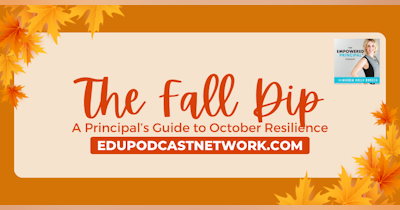Guest Author: Bryan Stanton, Host of Teaching While Queer
The start of the school year is always a fun time in which we get to know our students. We enlist them in activities to share their own experiences and plant the seeds for what we hope will be a solid relationship for the school year and for many of us in secondary classrooms, for many years to come. When classrooms are so diverse how do we navigate cultural and situational sensitivity while also allowing a space for all students? Working with diverse students can be difficult but it is so important that we, as educators, ensure we are modeling empathetic behavior that uplifts all students regardless of background. So how do we do that?
Start by doing what you are already doing; learn about your students. Find out just what makes them different and what connections they have with their peers and yourself. The first step is always to listen. Let them tell you stories and share their experiences without judgment. For inclusivity, you might try an assignment or task where students can share a story with you. It can be a real story or something they’ve made up. You learn about the student either way. I would avoid target questions about summer or family life as that can make some students feel uncomfortable but inside all of us is a storyteller. We tell stories with our voices, we write them, we draw them. Allow some autonomy with completing this assignment so students can express themselves in the way they feel best suits them.
The choice is everything. One of the things I’ve come to love about Universal Design for Learning is the idea of choice. Look through your Year-at-a-Glance or Scope and Sequence and find options for autonomy. Give your students a choice so that they can show you just how much they’ve learned using a medium that comes easiest to them. You will be surprised at just how much higher the quality of work will be when students get to take ownership of the assignment itself. This can be done through a choice board with options or allow them to go wild with ideas. Make sure that there are standards or learning objectives tied to the assignment to keep them on track.
When it comes to working with 2SLGBTQIA+ students, if you are able to, include an optional question on information forms and activities where students can share their pronouns. Share your own pronouns. This little action gives the student enough information to know that they are safe being their authentic self in your classroom. This is a hot topic right now as some parent groups fight back against this behavior but we wouldn’t ostracize a person based on their religion and there are protections for students when it comes to gender and sex under Title 9. Our goal is to make sure our students feel comfortable in our classroom. That means all students. And the best part, if you do your work on this, you only have to ask the question once and then move on with respecting the pronouns that the student is using. It doesn’t have to be a big deal.
As you work through the school year remember that we don’t know all the circumstances for each student outside of our classroom. It’s important to be objective when providing feedback or criticism and to focus on behaviors rather than the person. When you observe something that might be irritating or make you angry try to take a breath and say “I notice you are doing (insert behavior) this goes against our class agreement. Please change that behavior”. I know it sounds scripted but as a parent of adopted children my eldest son truly believed he was a bad kid because of the words adults said to him before he moved in with me. We must be more careful how we are speaking to children because it makes an impact.
The last thing I’d like to say is a big thing; Lead with Love. What children, regardless of background, need right now is someone to care for them. You can be that someone for the children in your classroom.


